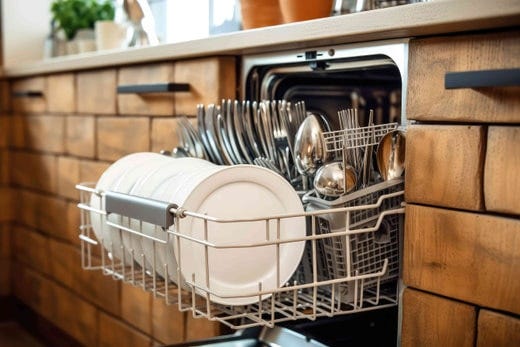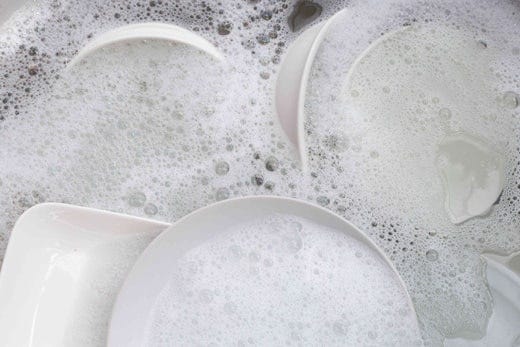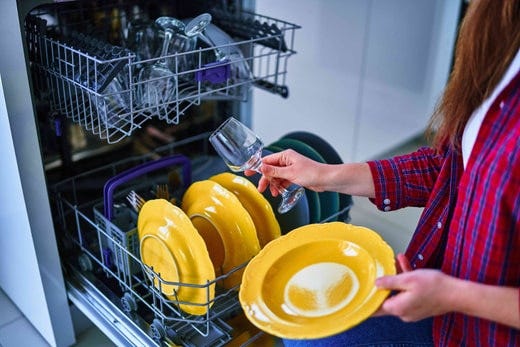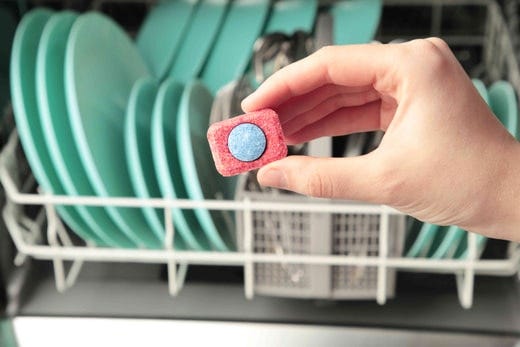
How Does a Dishwasher Work?

Understanding the various parts of a dishwasher and how they work helps you extract the most out of the dishwasher detergents, additives, and the appliance’s overall hygiene benefits.
During a wash cycle, a dishwasher acts more like a car wash than a swimming pool, which many people believe it to be. If you have been wondering what happens inside a dishwasher, this guide will present a perfect explanation of how does a dishwasher work, so keep reading!
Dishwasher working: step-by-step process
Whether you have a portable or built-in dishwasher, it works the same way, except that you’ll attach a hose connector to your kitchen faucet. Here’s how a dishwasher works.
1. Water flows into the dishwasher tub
During a dishwasher’s program and cycle, the water inlet valve inside the appliance opens, letting water enter the bottom tub until the overfill protection float determines the desired water level. Once reached, the inlet valve closes, ensuring water only fills the bottom of the tub.
2. Water temperature heats up
Depending on the dishwasher’s make and model, the appliance will heat the water using the heating element at the bottom of the dishwasher tub. Additionally, it can source hot water directly from your faucet.
Most of us aren’t aware of how important dishwasher temperature is when it comes to cleaning performance. Find out everything you need to know about your dishwasher water with Finish’s dishwashing temperature guidelines.
3. Dishwasher dispenser releases the detergent
Once the dishwasher water reaches the optimal temperature, the dispenser releases the dishwasher detergent into the tub. These detergents contain surfactants and enzymes that work together to break down oily residue and food particles and brighteners to make the dishes brighter.
Choosing the best dishwasher detergent is crucial to ensure an optimal dishwashing experience by achieving spotless and sparkling dishes. Therefore, you must go for a high-quality detergent like Finish, which leading dishwasher manufacturers highly recommend.
4. Spray arms circulate water
The dishwasher's spray arms, positioned below the bottom and upper racks and sometimes on the ceiling in certain models, activate when the circulation pump directs water into them.
This pressurized water then sprays evenly across the interior, effectively removing food residues and debris from your dishes during the washing cycle.
5. Dirty water drains
After completing the wash cycle, the dishwasher expels dirty water and debris through the tub’s bottom, draining into either your garbage disposal or your home's waste system.
6. Rinse water circulates
The rinse cycle sprays clean water throughout your dishwasher to rinse away any detergent residue. The water is then drained out again through a hose.
7. Heat dries the dishes
Once the rinse water is removed, the heating element increases the air temperature to dry your dishes and eliminate remaining moisture, especially in dishwashers with a Heated Dry option. Certain models offer fan-dry features, while others rely on opening the door for air drying.
.png?width=70&height=45&format=png&quality=50)


